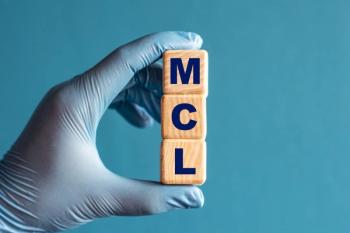
Low GNRI Score Associated With Higher All-Cause, Cardiovascular Mortality Rates in Older Adults With Osteoarthritis
Key Takeaways
- Lower GNRI scores are associated with increased all-cause and cardiovascular mortality in older OA patients, highlighting the importance of nutritional assessment.
- Higher GNRI scores correlate with decreased mortality risks, suggesting its potential as a predictive marker for early intervention in OA management.
Lower geriatric nutritional risk index (GNRI) scores in older patients with osteoarthritis are linked to higher all-cause and cardiovascular mortality risks, highlighting the critical role of nutritional assessment in managing their health.
A lower geriatric nutritional risk index (GNRI) score may independently lead to increased all-cause and cardiovascular mortality in patients with
Growing evidence suggests that the systemic effects of OA, including metabolic dysregulation, chronic inflammatory states, and cardiovascular disease susceptibility,
Nutritional status is widely
The GNRI, derived from serum albumin levels and body mass index (BMI), was originally
To assess the association between GNRI scores and all-cause and cardiovascular mortality in older patients with OA, the researchers analyzed data on 2922 patients aged 60 and older from the National Health and Nutrition Examination Survey database across 10 survey cycles, spanning 1999 to 2018.
Three Cox proportional hazards regression models were performed to evaluate the predictive value of GNRI for all-cause and cardiovascular mortality, with HRs and 95% CIs reported. Model 1 was unadjusted, Model 2 was adjusted for demographics, and Model 3 was adjusted further for lifestyle factors.
GNRI was calculated using each patient’s serum albumin levels and body weight. To determine nutritional risk status, the researchers divided patients into 2 cohorts based on a GNRI threshold of 98; patients with a score of 98 and above were considered to have high GNRI scores, whereas those below 98 had low GNRI scores.
Additionally, for each participant, the follow-up period was calculated from initial study enrollment until death or December 31, 2019, whichever occurred first. The researchers obtained mortality status from the US CDC-National Death Index database, with cardiovascular disease-related deaths identified based on relevant International Classification of Diseases, 10th Revision codes.
Of the 2922 eligible patients, 2670 (91.37%) had high GNRI scores, while the remaining 252 (8.63%) had low GNRI scores. Participants in the low GNRI group were significantly older than those in the higher GNRI group (mean [SD] age, 73.56 [7.91] vs 71.62 [7.30] years; P < .001). However, the researchers found no significant differences between groups for either sex (P = .875) or race (P = .347) distributions.
When treated as a continuous variable, higher GNRI levels were associated with decreased risk of all-cause mortality in Models 1 (HR, 0.987; 95% CI, 0.984-0.989), 2 (HR, 0.991; 95% CI, 0.988-0.993), and 3 (HR, 0.933; 95% CI, 0.990-0.996; all P < .001). Higher GNRI levels were also linked to a decreased risk of cardiovascular mortality across Models 1 (HR, 0.986; 95% CI, 0.982-0.990), 2 (HR, 0.999; 95% CI, 0.987-0.995), and 3 (HR, 0.991; 95% CI, 0.986-0.997; all P = .002).
As a categorical variable, higher GNRI scores were correlated with a decreased risk of all-cause mortality, as demonstrated in Models 1 (HR, 0.492; 95% CI, 0.415-0.583), 2 (HR, 0.528; 95% CI, 0.444-0.628), and 3 (HR, 0.669; 95% CI, 0.543-0.823; all P < .001). Similarly, based on Models 1 (HR, 0.455; 95% CI, 0.342-0.605), 2 (HR, 0.509; 95% CI, 0.380-0.681), and 3 (HR, 0.592; 95% CI, 0.418-0.838; all P = .003), high GNRI scores were considered a protective factor against cardiovascular mortality.
“The results provided compelling evidence for a nonlinear relationship, highlighting the significance of nutritional status as a modifiable risk factor in this population,” the authors wrote.
The researchers concluded by acknowledging their limitations, including the study’s observational design, which prevents causal inference. Also, GNRI was only calculated once, which did not account for changes in nutritional status over time. Still, they expressed confidence in their findings and called for future action.
“…these results underscored the need for routine nutritional assessment and potential intervention in the management of elderly OA patients, with GNRI serving as a simple yet powerful tool for evaluating high-risk individuals,” the authors concluded.
References
- Jiang Z, Cai X, Lan W, et al. Predictive role of the geriatric nutritional risk index in all-cause and cardiovascular mortality among elderly patients with osteoarthritis. BMC Geriatr. 2025;25(1):592. doi:10.1186/s12877-025-06225-9
- Constantino de Campos G, Mundi R, Whittington C, Toutounji MJ, Ngai W, Sheehan B. Osteoarthritis, mobility-related comorbidities and mortality: an overview of meta-analyses. Ther Adv Musculoskelet Dis. 2020;12. doi:10.1177/1759720X20981219
- Shakersain B, Santoni G, Faxén-Irving G, Rizzuto D, Fratiglioni L, Xu W. Nutritional status and survival among old adults: an 11-year population-based longitudinal study. Eur J Clin Nutr. 2016;70(3):320-325. doi:10.1038/ejcn.2015.109
- Cereda E, Pedrolli C. The geriatric nutritional risk index. Curr Opin Clin Nutr Metab Care. 2009;12(1):1-7. doi:10.1097/MCO.0b013e3283186f59
Newsletter
Stay ahead of policy, cost, and value—subscribe to AJMC for expert insights at the intersection of clinical care and health economics.







































